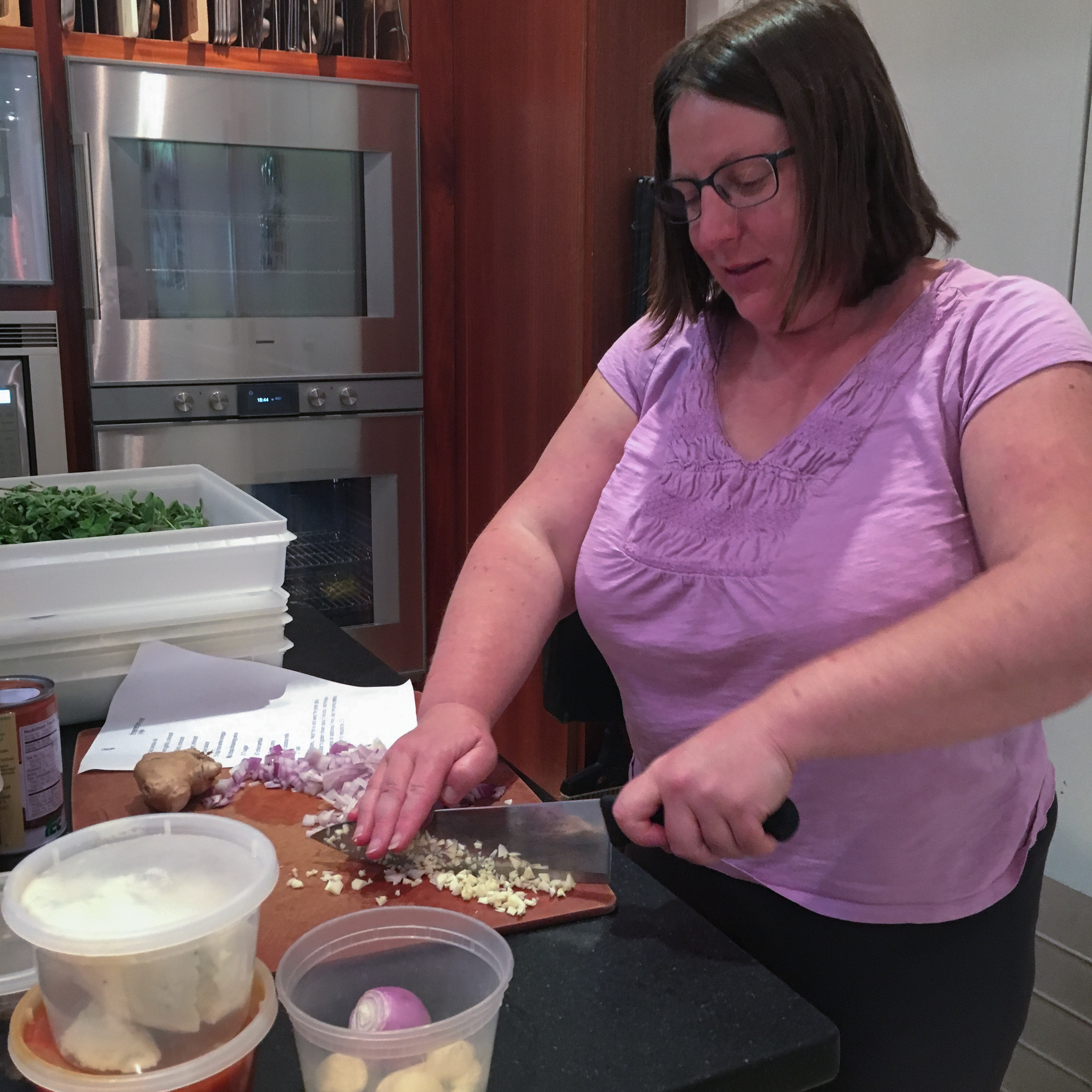Instant Pot as Community
We continue with our summer blog series “Perspectives from Anthropology of Food” with this post from Laura Kitchings. This series presents work written by the students in the summer Anthropology of Food class (ML 641) in which they reflect on current issues, discuss assignments they have worked on, or address topics of particular interest to them.
My participation in the Anthropology of Food course led me to reflect on my participation in the moderated Facebook group, Instant Pot Community. As of June 25th, 2017, the group had 520,441 members.

For those who don’t know, the Instant Pot (produced by the Instant Pot company) is an electronic multi-cooker that acts as a slow cooker, electric pressure cooker, rice cooker, steamer, yogurt maker, and sauté pan, depending on the chosen setting. It features multiple safety features to calm the fears of those who have memories of explosions caused by earlier generations of pressure cookers. Several models of the Instant Pot are available at kitchen and online retailers at various price points, and many are purchased through third party sellers. Breville, All-Clad, and other companies now produce similar products, but what sets the Instant Pot apart is the company’s focus on the creation and moderation of its Facebook community.
On an average day, posts cover a variety of topics related to cooking in the appliance. Sample posts include: a military wife describing the appliance to her deployed husband, a mother asking for advice on preparing meals for a child recently diagnosed with celiac disease, and a question about how to best cook frozen chicken wings in the appliance. Almost all posts receive a reply from another group member within minutes. Throughout the threads, jokes about being a Pot Head abound, specialized terms such as NR (natural release) and PiP cooking (cooking in another container within the appliance) are used, photographs of customized decals placed on the outside of the appliance are shared, and links to amateur YouTube videos of food preparation using the Instant Pot are shared. Four employees of the company moderate the group and regularly close comment threads for inappropriate content.
In the class we discussed the practice of “doing-cooking” from Luce Giard’s chapter on “Gesture Sequences” in the larger work, The Practice of Everyday Life by Certeau, Giard, and Mayol (1998). In this chapter, Giard discusses how daily cooking involves both the mind and body. She discusses how the mind works to organize, make decisions, improvise, and a host of other activities, while the body mixes, stirs, and performs the actions needed for cooking. For me, this article contextualizes the number of posts from people trying to multi-task while cooking. As shown by Giard, the mind and body are already fully occupied during the process of planning a meal and cooking. People post about being interrupted while cooking to breastfeed their children, about dogs who need to be taken outside, children working on homework, and numerous other daily realities. Members of the Facebook community post about how the Instant Pot allows them to take fewer physical actions during the creation of a meal, and also how the Keep Warm function of the Instant Pot means that even if the dish is finished, it does not need to be eaten immediately. People also post about how the food cooking in the Instant Pot does not need to be monitored (or, as referred to in posts, “Baby-Sat”) while cooking. So the cooks can physically and/or mentally attend to other tasks while the food cooks without a risk of burning or kitchen fire. Other posts share recipes related to a variety of diets, or express budgetary concerns. This assists with the mental decisions needed to create a meal within the dietary needs and budget of the particular household.
In a 2011 article in American Ethnologist, Gagné discusses how urban farmer’s markets serve as a “Third Place.” A “Third Place” typically develops as an accessible space outside of work and home where the regulars have no obligation to spend time. According to Gagné, urban farmer’s markets provide an accommodating location where conversation between regulars is prioritized. Starbucks has also been studied as an example of “Third Place” in an article by En-Yin Lin. In this article, Starbucks provides a comfortable, consistent physical environment for the consumer to construct their personal and social identities, while publically consuming a product that fits their developing idealized view of themselves (Lin 2012).

The Facebook group for the Instant Pot acts as an online “Third Place,” one that celebrates the constant ritual of doing cooking. While there is no obligation for participation in the community, the online space allows the participants to showcase and develop their identities. The only requirements of participation are that posts tangentially relate to the Instant Pot and follow the rules set by the moderators. The underlying conversation in the majority of the posts is the challenge of creating meals that meet the nutritional needs of the participant’s households within a budget. Participants also share their frustration that their meal creations are not appreciated by the household, and often find this appreciation in the Facebook group. Like the Farmer’s Markets, the Facebook group often provides its members with a bit of culinary tourism, as individuals may follow threads related to foods that are unfamiliar and are introduced to additional online cooking resources by other members. The Facebook community is similar to the Starbucks experience as the Instant Pot company provides a comfortable, consistent, online environment. In this environment, the participants showcase their developing identities while publically stating their appreciation for an appliance that makes meal preparation easier.
In short, the Instant Pot Facebook Group is an excellent example of “Third Place.” Beneath the day-to-day exchange of information of cooking with this appliance, there is another discourse—one in which users can share their frustration around the day-to-day mental and physical realities of cooking, share advice around meal planning, and publically develop their own individual identities as meal creators.